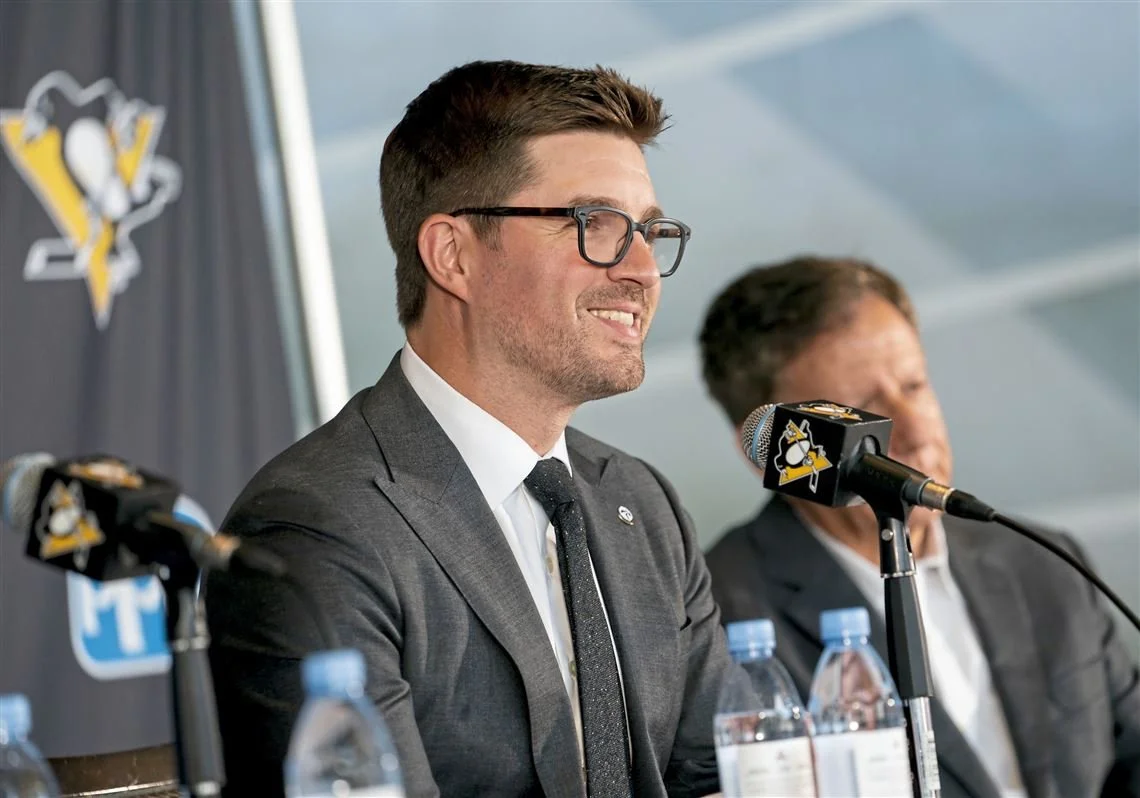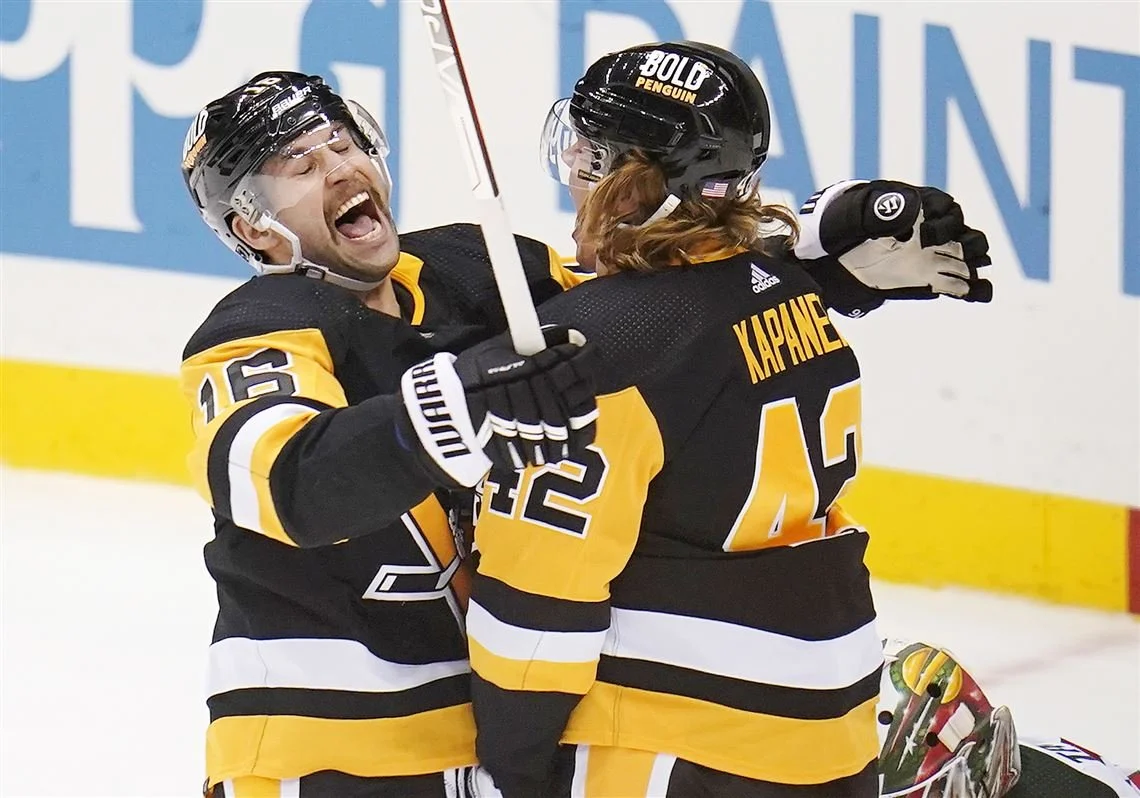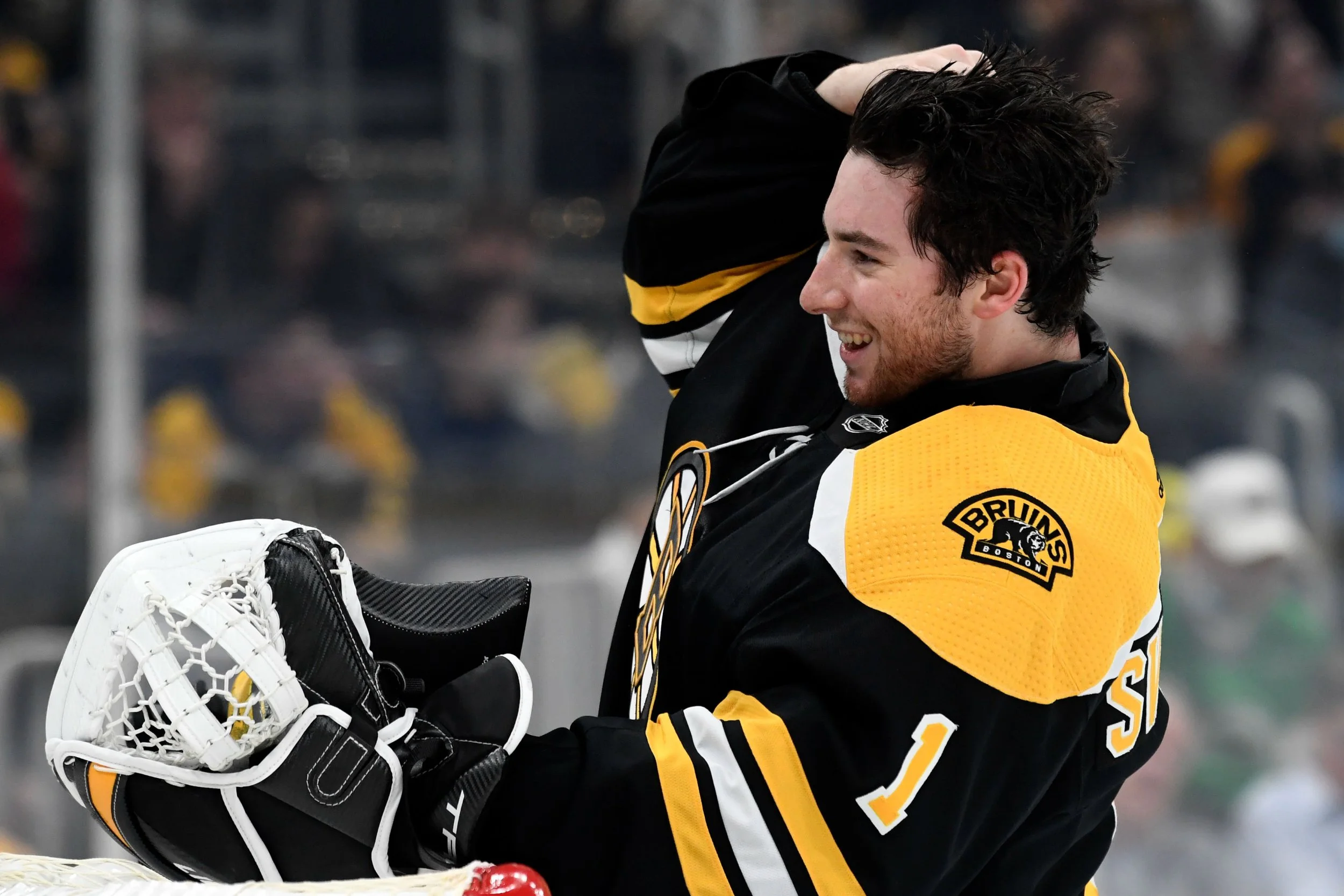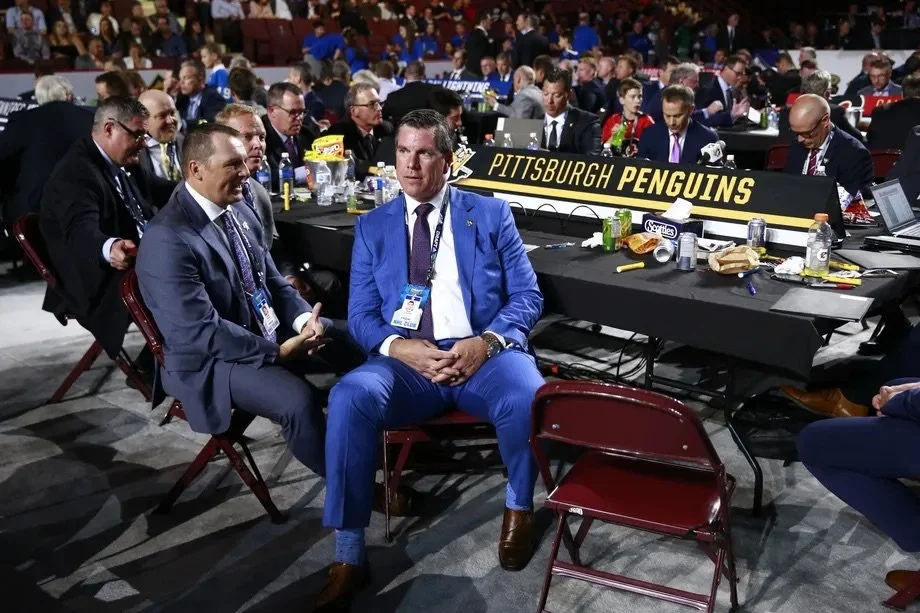Penguins Offseason Order of Business
Benjamin B. Braun/Post-Gazette
PITTSBURGH - Fenway Sports Group answered the biggest question of the Penguins' offseason last week when they announced Kyle Dubas as the team’s next ultimate hockey decision-maker. Now that the biggest question has an answer, the natural follow-up question for Penguins fans is, “What’s next?”
Kyle Dubas has a tall task ahead of him to bring the Penguins back into contention, and prepare for the next iteration of the team following the inevitable retirements of Sidney Crosby, Evgeni Malkin, and Kris Letang in the near future. This is a part of the “two-pronged approach” Dubas described during his introductory press conference in the Lexus Club at PPG Paints Arena last Friday.
Dubas is sure to make his mark on the team this offseason, as for the first time in his career, he is the top decision-maker and does not need to gain the approval of a non-owner superior. Although I am not Dubas, I’m going to predict what I think his first moves will be. The 2023 NHL Entry Draft is about three weeks away, and free agency will open up shortly after. Dubas is certainly working on his next moves as I type this.
1: Buyout Mikael Granlund
Nathan Ray Seebeck/USA Today
This trade may have been the worst move of the Ron Hextall/Brian Burke era. In a scramble to move deck chairs on the Titanic as the iceberg inched nearer, Hextall frantically sent a 2023 second-round pick to the Nashville Predators for the 31-year-old center with two more years left on his deal at $5 million annually.
There was some reason to think that move would work. For starters, Granlund had some of his best offensive outputs playing alongside fellow former Minnesota Wild forward Jason Zucker. However, with how Zucker played around the trade deadline, there was little chance of Head Coach Mike Sullivan taking Zucker off Malkin’s left wing. Also, Granlund had scored 60 points on three separate occasions and 40 points on six separate occasions (seven if you include the 2022-23 season).
Granlund’s time in Pittsburgh was an utter failure and only sealed Hextall’s and Burke’s fates for the end of the season. In 21 games played in Pittsburgh, he scored five points, with just a single goal. He has had some down seasons in the past and bounced back from them, but there does not seem to be any fit for him on this Penguins roster. While front offices are often hesitant to buy out players, it makes too much sense this time. The only better scenario than buying out Granlund would be finding a trade partner that would take him off the Penguins’ hands, without making the Penguins pay additional assets or making the Penguins take on another bad contract.
A buyout of Granlund would cost the Penguins $833,333 this season and $1,833,333 in each of the following three seasons. Essentially, Dubas and the Penguins would gain $4,166,667 in cap space for the 2023-24 season, $3,166,667 for the 2024-25 season, and lose $1,833,333 in each of the two following seasons. With the expectation of the salary cap increasing a significant amount over the next few seasons (projected to over $90 million by the 2025-26 season), a buyout makes too much sense.
On top of the money saved over the next two seasons, it also opens up an extra roster spot, giving the Penguins more flexibility. Dubas has zero loyalty or allegiance to Granlund, as Hextall was the one who decided to bring him in. In my opinion, Granlund is as good as gone.
2. Lock Up Jason Zucker
Gene J. Puskar/Associated Press
Jason Zucker is coming off his best statistical season as a Penguin. The last time he had as good of an offensive season, was also a contract year for him with the Wild. He has battled countless injuries in his career, especially during his time in Pittsburgh. The left winger has five 20-plus goal seasons under his belt, but his contribution goes beyond the numbers. On countless occasions this season, Mike Sullivan would mention during his postgame press conferences Jason Zucker's importance to this team.
He referred to Zucker as the heart of the locker room and remarked how little personality his team had, but Zucker was the exception. Zucker isn’t afraid to throw body or shove players after the whistle either. His intangibles and offensive production make him invaluable to the Penguins. I can’t see him asking for much more than his last annual salary of $5.5 million. If a four-year contract worth $6 million annually gets the deal done, put pen to paper, Dubas.
3. Make a decision in Goal
It’s really hard to predict where this one is going to go. Dubas was asked during his press conference about Tristan Jarry and the impending goaltending decision. He was less than enthusiastic to give his confidence to Jarry.
There will be a ton of options in goal this offseason. Not all options will be better than Jarry, but statistics are not the only important aspect to consider. For a large chunk of the Penguins’ season, Jarry was either unavailable to play due to injury or played injured, hurting his team in the process. This isn’t a one-off thing either. Jarry’s tenure with the Penguins was full of uncertainty concerning his availability, including the 2022 Stanley Cup Playoffs, where the Penguins had to play Louis Domingue for most of the series against the New York Rangers. Reliability is a huge factor when considering a goaltender. In my opinion, Jarry has been too unreliable for them to bring him back.
As I mentioned, Dubas will have options, both short-term and long-term. During his tenure in Toronto, the goaltending position became a carousel year after year. He inherited Frederik Andersen from his predecessor and kept him around until the end of the 2020-21 season. Since Andersen’s departure, his Leafs could not find a steady hand in net for more than a season at a time. Jack Campbell, Petr Mrazek, Erik Kallgren, Matt Murray, and Ilya Samsonov are among the growing list of goaltenders to man the net for the Leafs since Dubas let Andersen walk in free agency.
If Dubas decides to follow the short-term path, plenty of veteran goaltenders are available this offseason. The list includes the aforementioned Frederik Andersen, Antti Raanta, Joonas Korpisalo, Adin Hill, Martin Jones, Semyon Varlamov, and Cam Talbot, among others.
He could go that route and change the position annually, or he could go big and invest in one player for the position for the foreseeable future.
Brian Fluharty/USA Today
I can hear the groans from Bruins fans all the way in Pittsburgh. Jeremy Swayman played as the 1B goalie in tandem with Vezina Trophy finalist Linus Ullmark this season. While some may advertise Ullmark’s numbers as the bigger part of the Bruins’ record-breaking regular season, Swayman had a season to remember himself. He posted a 24-6-4 record with a .920 save percentage playing behind Ullmark. In my opinion, Swayman has played enough to prove he can become a starting goalie. The Bruins have Ullmark locked up to a contract for two more seasons at $5 million annually, making it less likely they pay Swayman a starting goaltender salary in his next contract.
Over the course of his career, Swayman has played 88 career games and has a .920 save percentage. He is only 24 years old, and is a pending restricted free agent, meaning Dubas would need to offer sheet him and provide the Bruins with draft compensation, or possibly strike a trade with Boston to acquire his rights. If Dubas wants to set himself up long-term in the goaltender position, he can make a splash by acquiring Swayman. The Penguins will have the money to make it happen. In terms of the assets to make a deal, I’m not sure. I assume Boston values him highly, but just how high, nobody really knows.
The offer sheet compensation gives us an idea of how much the league would value him if the Penguins would submit an offer sheet instead of trading for him. Assuming his salary would land somewhere between $4,290,126 to $6,435,186, the Penguins would need to send their 1st round pick next year, as well as their own 3rd round pick next year. There’s a small problem with that. The Penguins do not own their 3rd round pick in the 2024 NHL Draft. Ron Hextall dealt that pick, along with Brock McGinn to the Anaheim Ducks for six games of Dmitry Kulikov. So, the Penguins would either need to reacquire that pick (from a position of weakness in negotiations) or offer Boston a trade instead.
A lot needs to happen to bring Swayman to Pittsburgh, but I have been banging this drum for a long time and would really love to see it happen.
4. Make a Decision with the 14th overall pick
Jeff Vinnick/Getty Images
If you had asked me before the Dubas hiring if the Penguins would use the 14th overall pick themselves, I would have told you to put money on it. This draft is insanely deep, and the players available at 14th overall this year are of similar caliber to some top-5 picks in previous drafts. However, there are few things Kyle Dubas loves more than trading back in the draft with his top pick while subsequently accumulating more picks.
At this point, that seems like the most likely option. Maybe Dubas can land a late first and an early second in the process and potentially use it to improve the roster. Dubas had mentioned a hole on the top end of their defense at his press conference, so maybe a top-pairing defender becomes available. He might need to package that pick to acquire a long-term answer in net (see above). Although, it may behoove Dubas to make the pick since the prospect cupboard has been bare for over a decade now, and there’s a legitimate chance to pick a blue-chip prospect who is not too far off from being a regular in the NHL lineup.
What would I do? I’d make the pick. The prospect of picking someone like F Zach Benson, F Gabe Perreault, F Oliver Moore, or D Axel Sandin Pellikka, among others projected in that range, is too good to pass on.
I expect this first offseason as Penguins President of Hockey Operations to be a very busy one for Dubas. On top of those listed above, he will be tasked with completely filling out the depth of the NHL roster, reinvesting in the minor league affiliates, as well as hiring a General Manager. All eyes will be locked on the newcomer as he looks to shape Penguins hockey for years to come with his next moves in the coming weeks.





